VE Tank
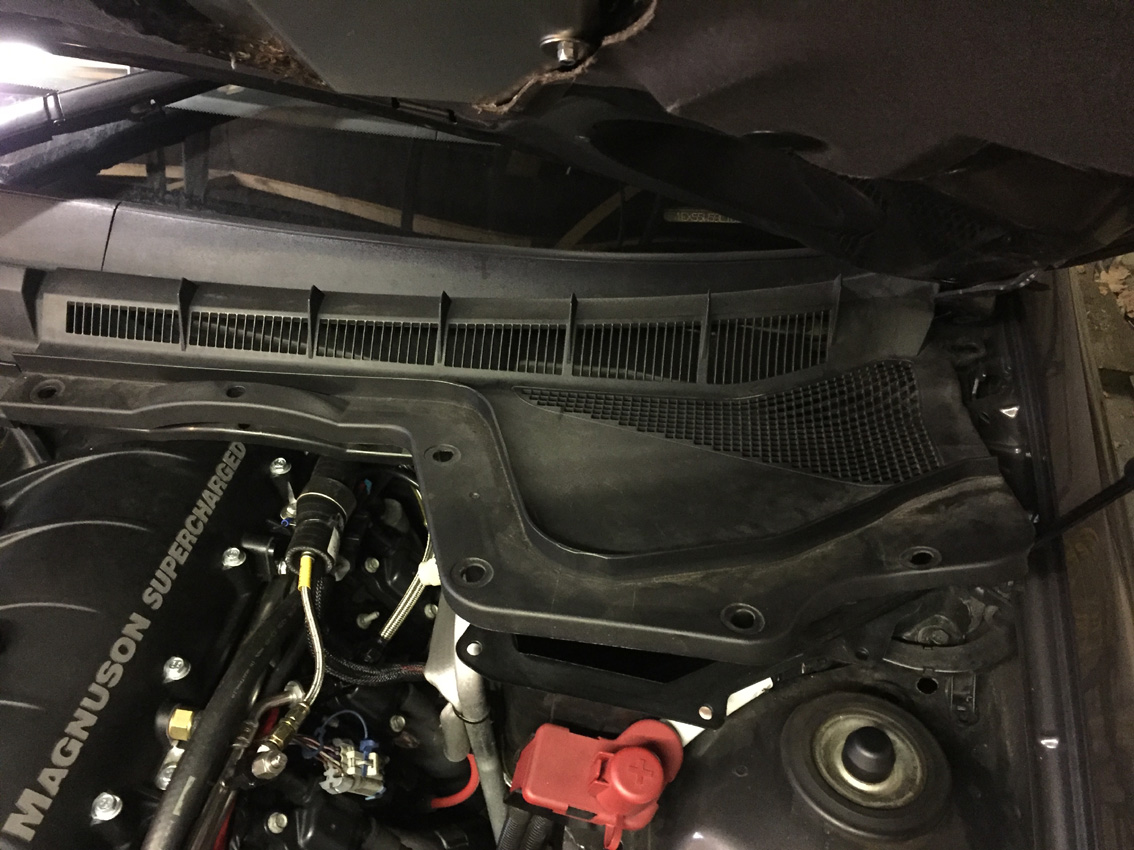
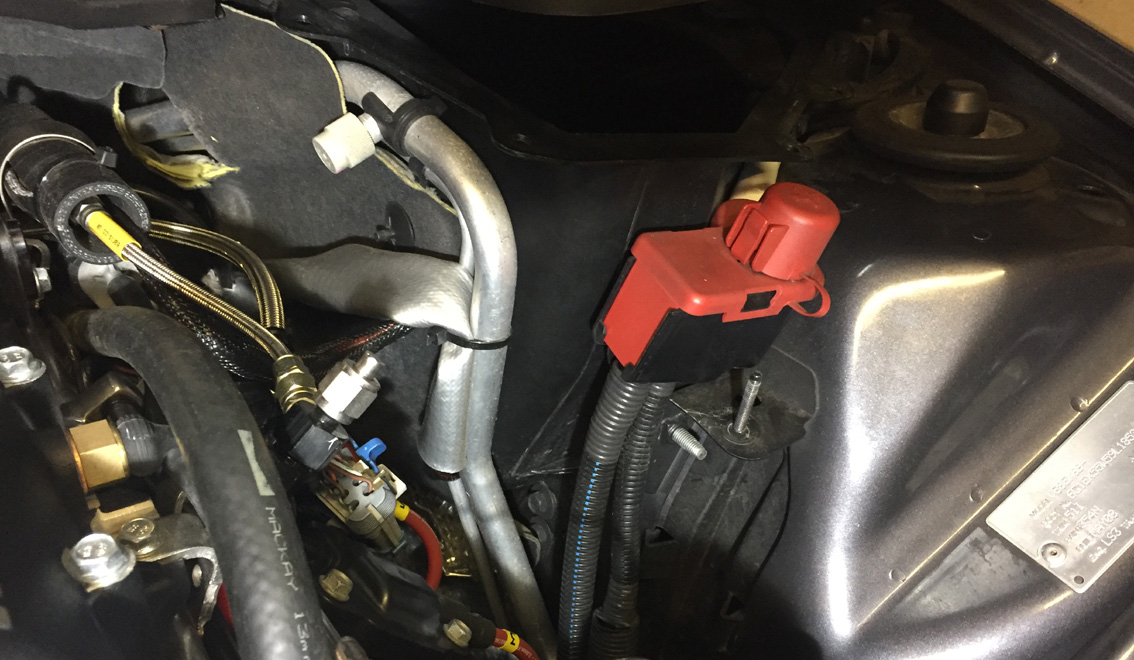
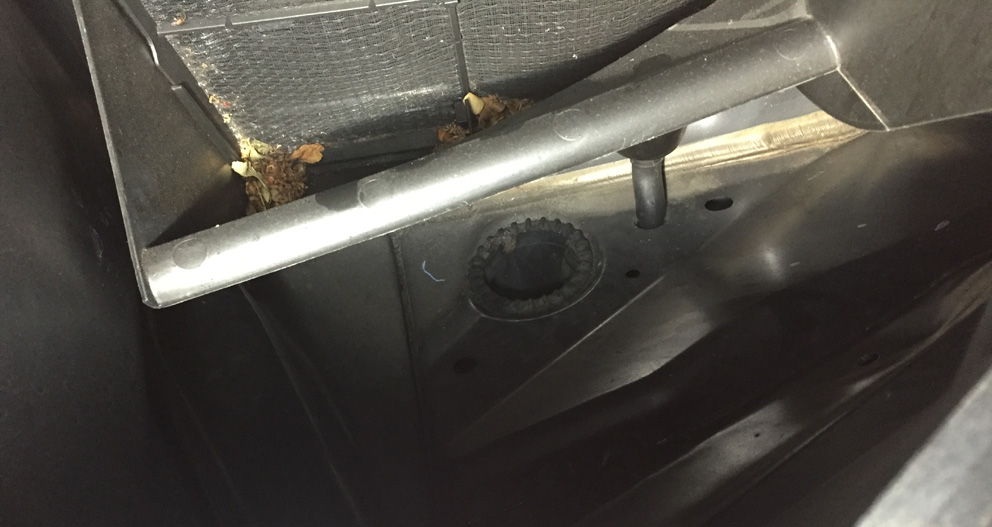
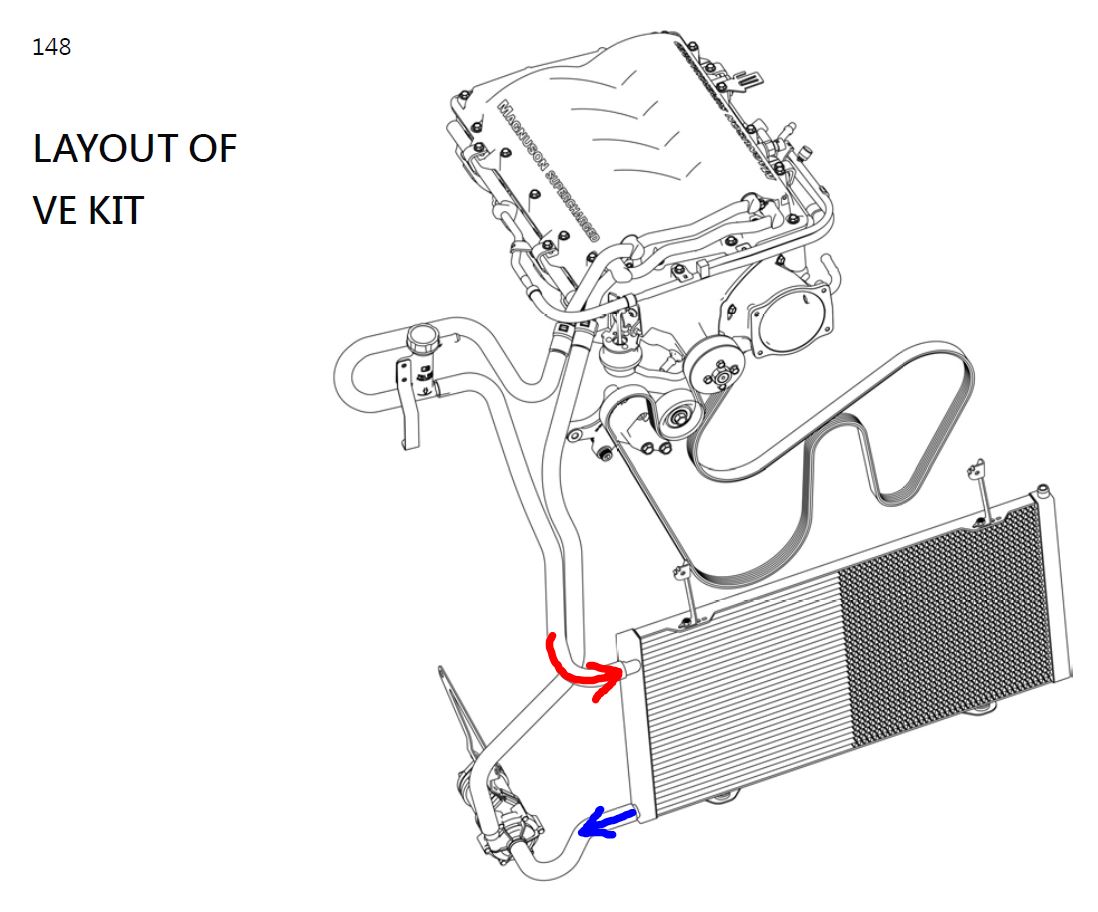
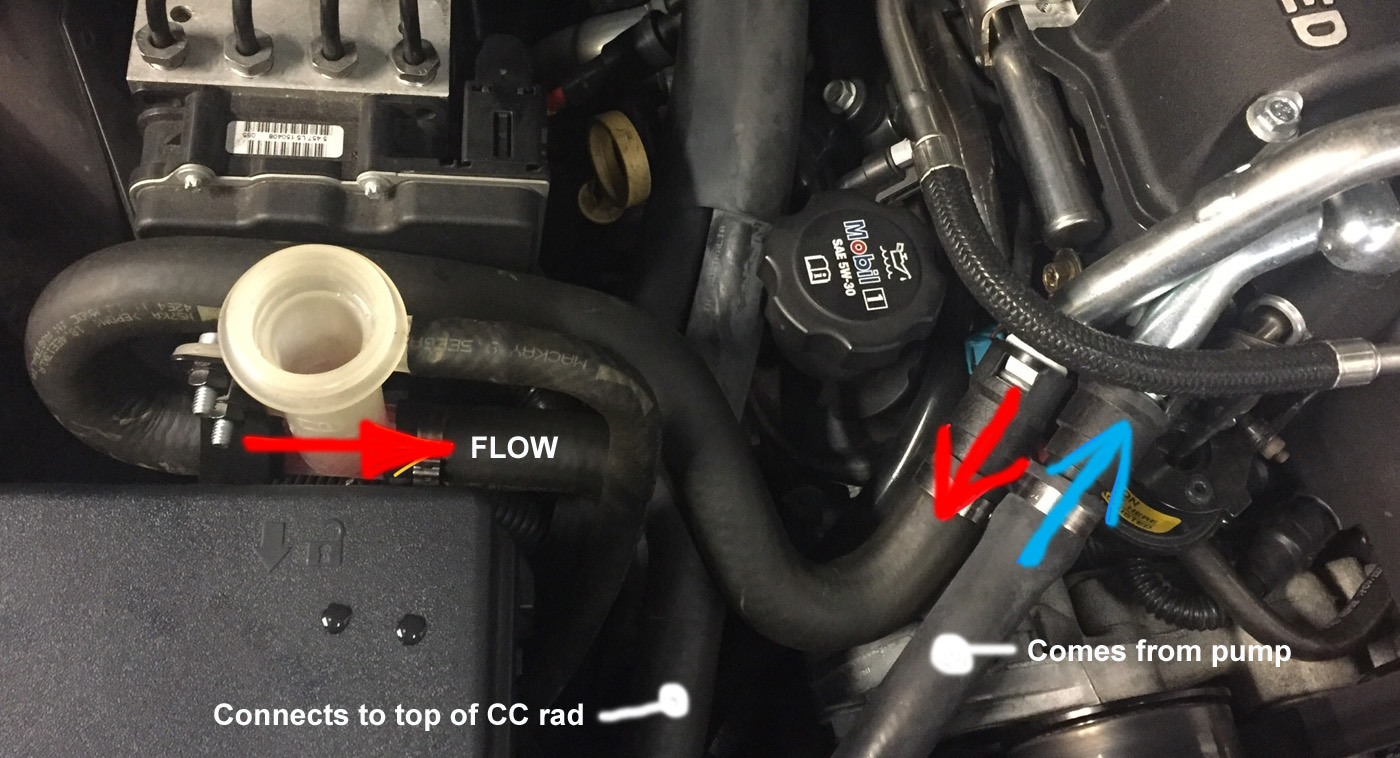
Some rough flow numbers
Bosch 1150 LPH pump, so 19 LPM
(without restrictions ?)
With circuit restrictions, ltrs say
18LPM
Mile run flat out takes 30secs, so
pump will flow 9L in that time.
Charge cooler std capacity 3L, tank
capacity 5.25L, total 8.25L.
So very roughly, could say charge
cooler total capacity would do 1 circuit during a mile run with tank.
Without tank it would circuit at least 2
1/2 times.
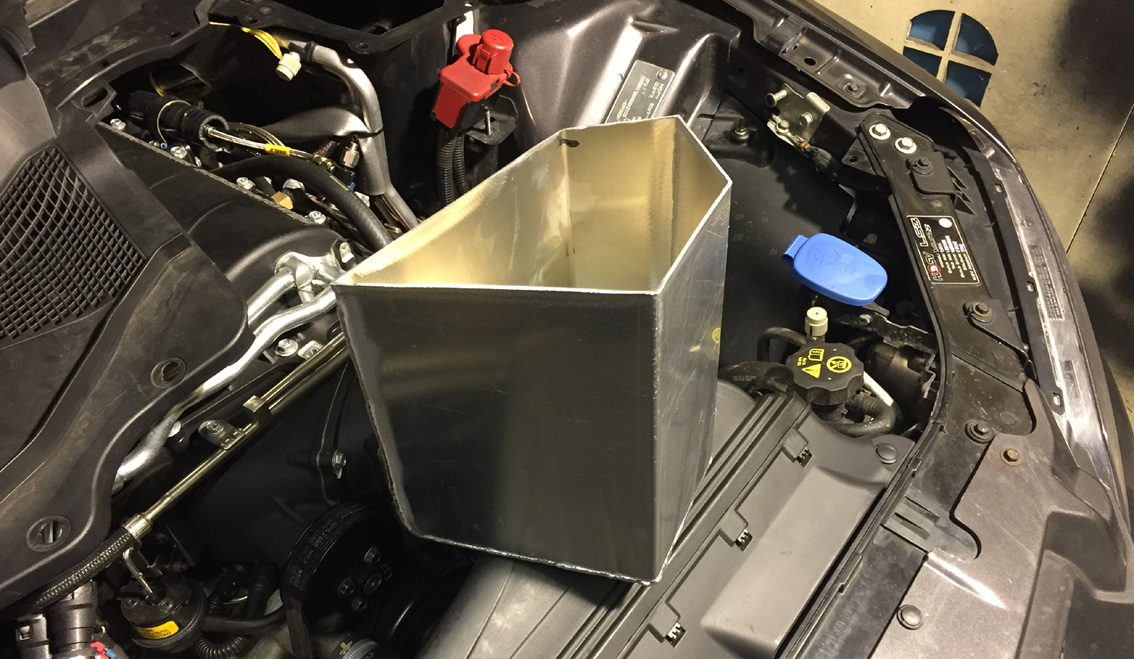
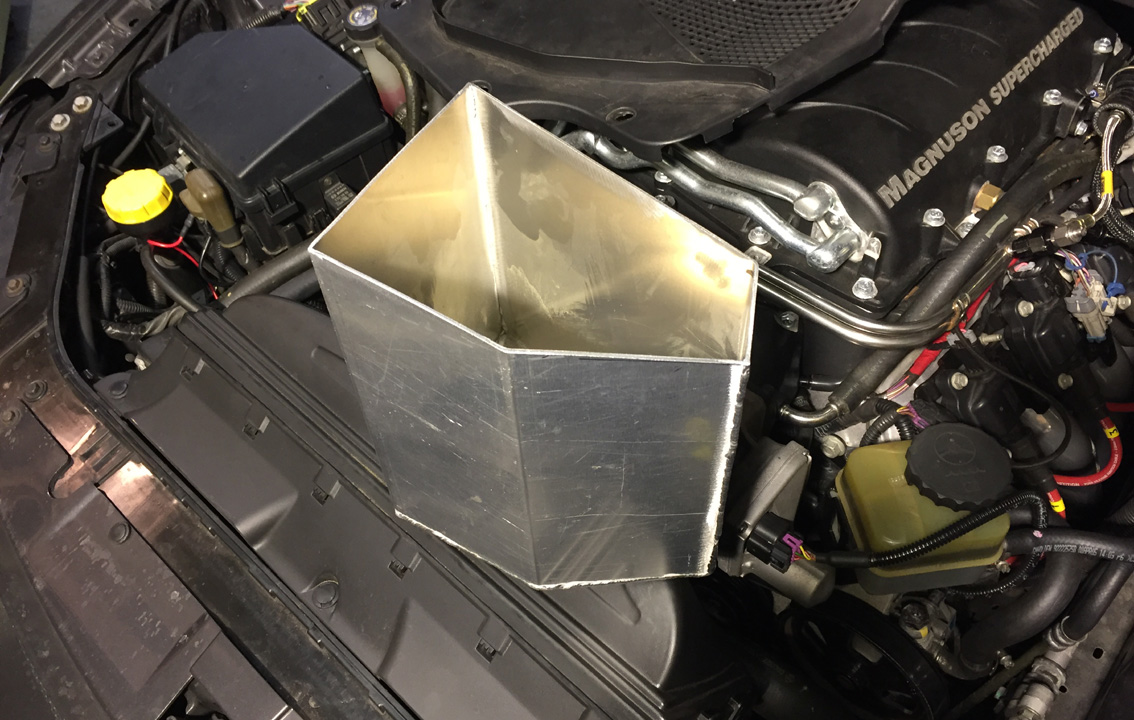
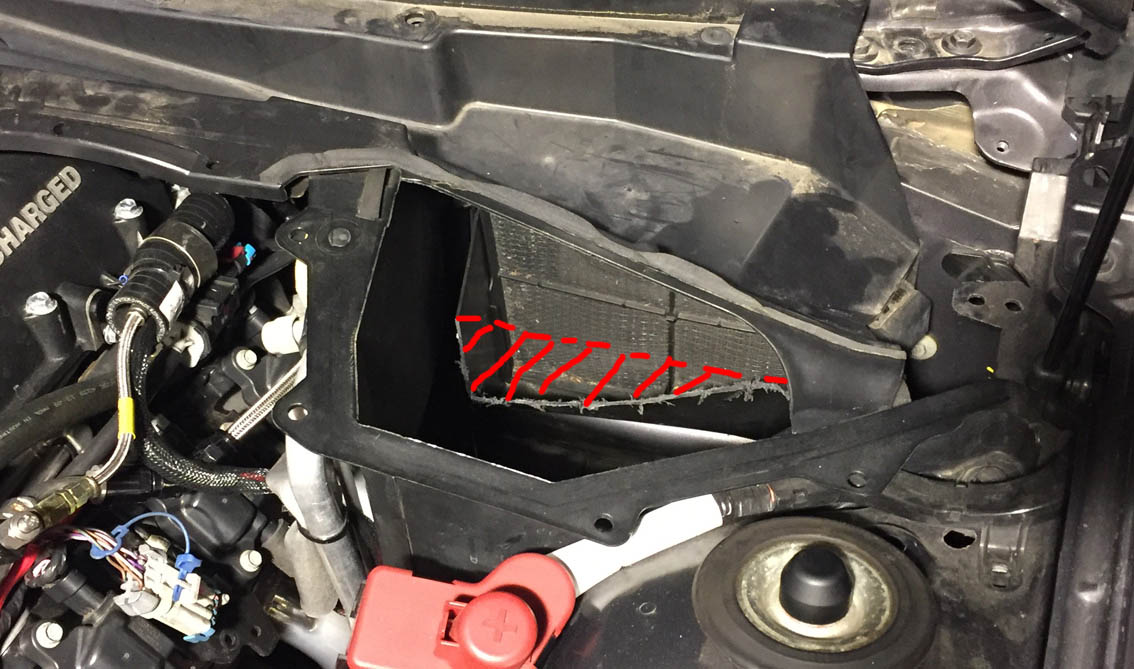
Remove the red hatch area of plastic
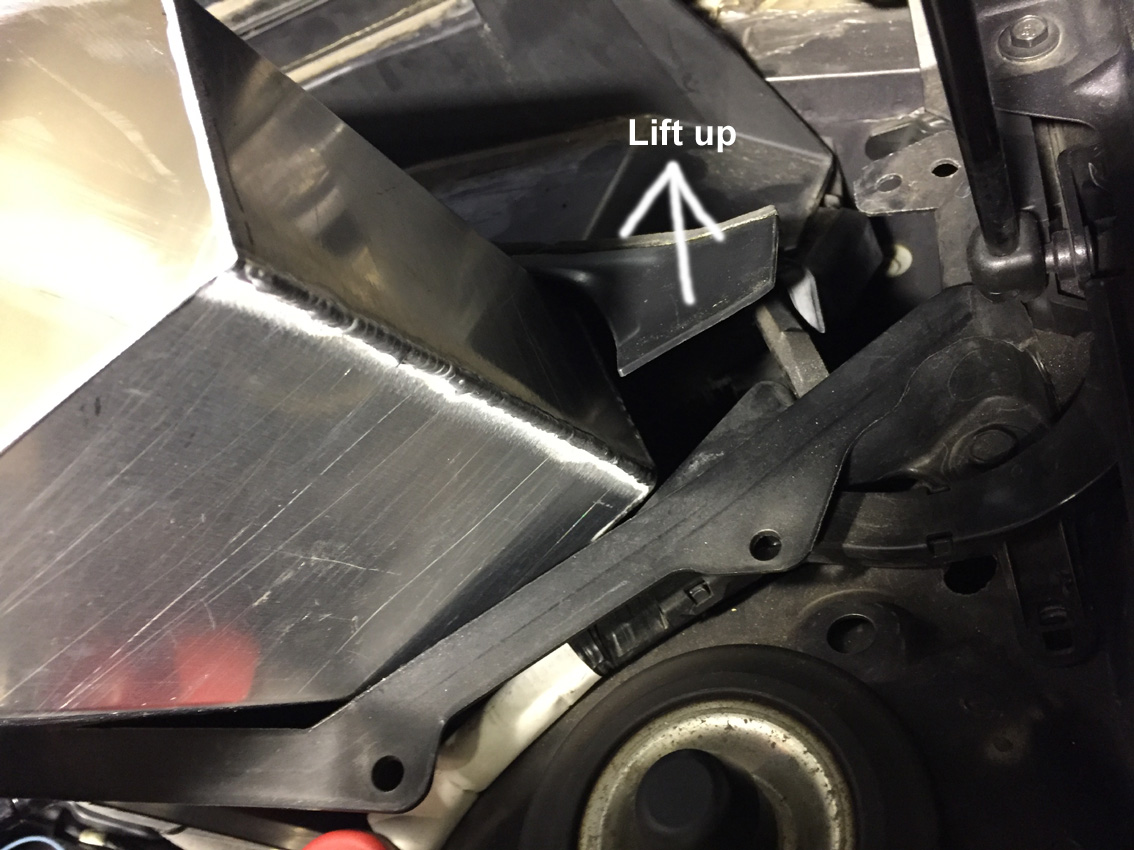
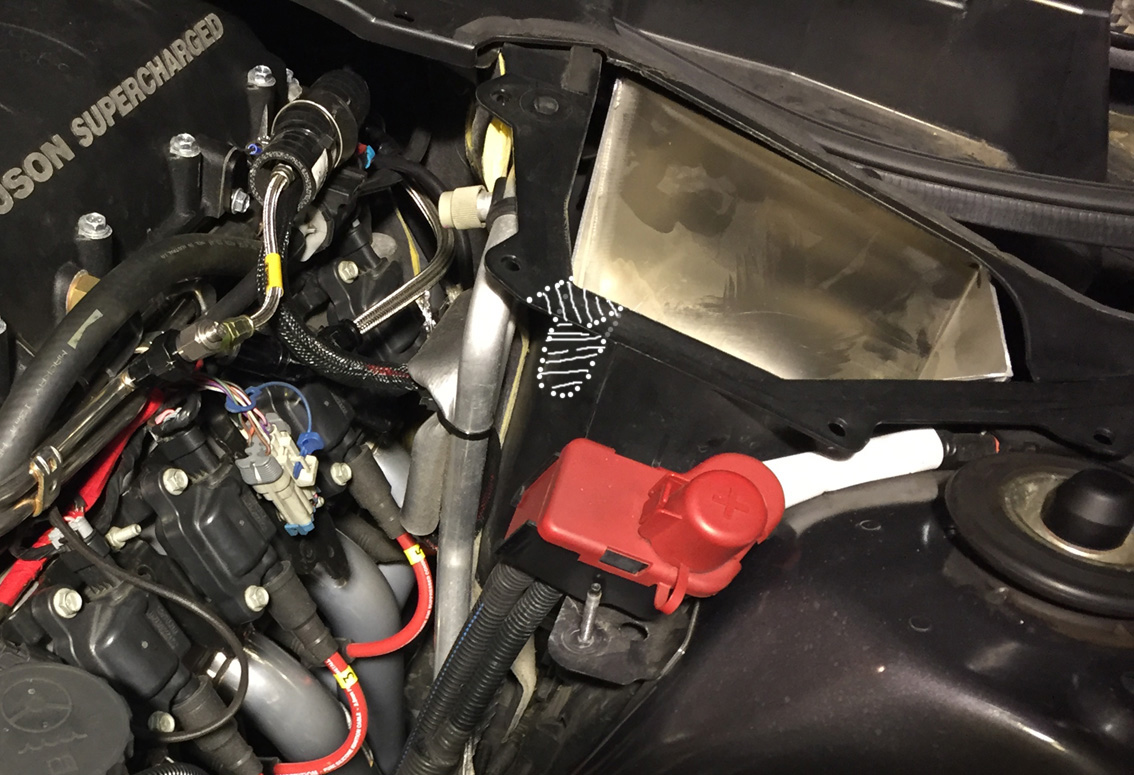
Cut out required for
pipework
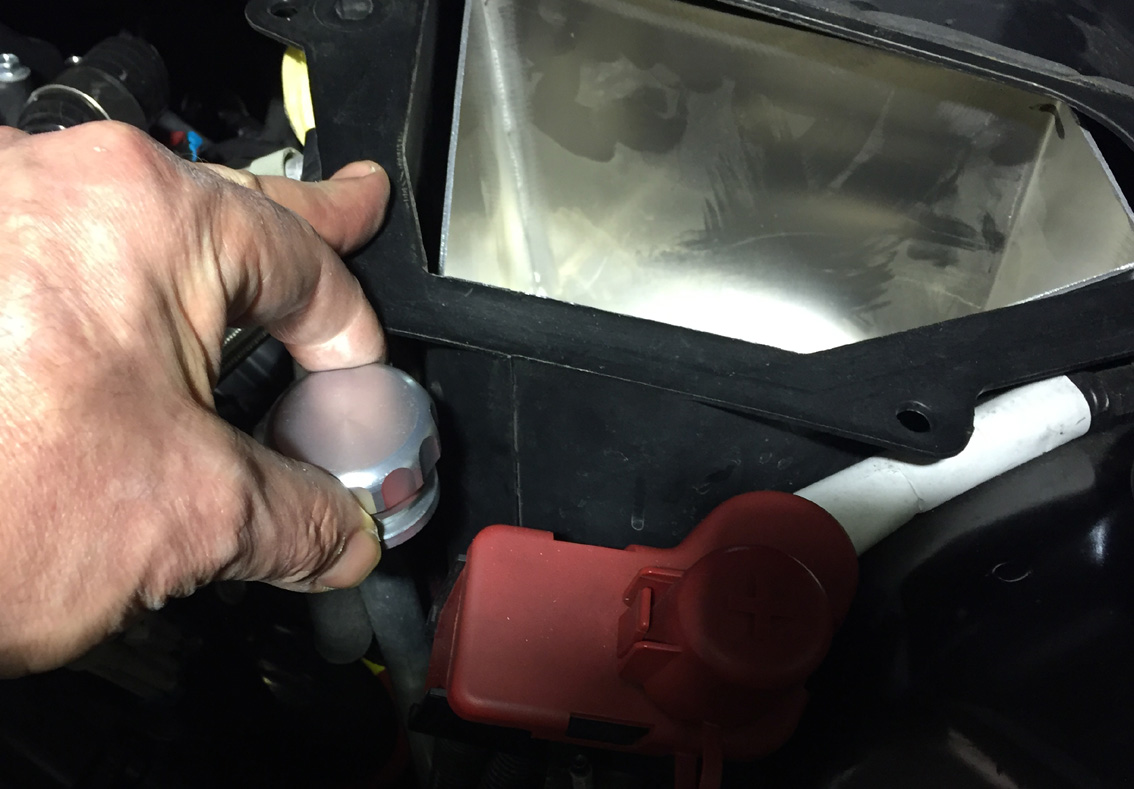
Fill point added to the
input pipe, accessible when trim is in place.
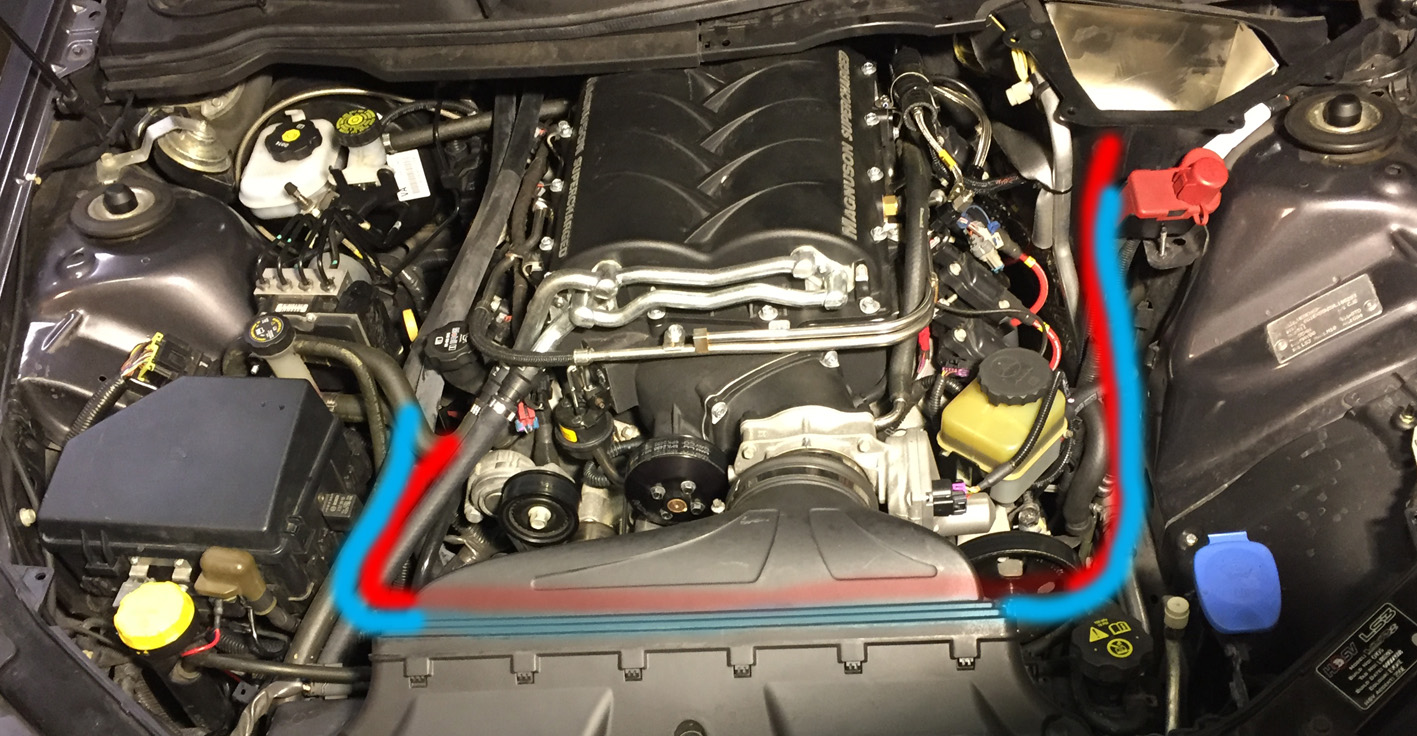
Represents only tank
connection.......consider doing away with the plastic de-gass fill point
altogether ??
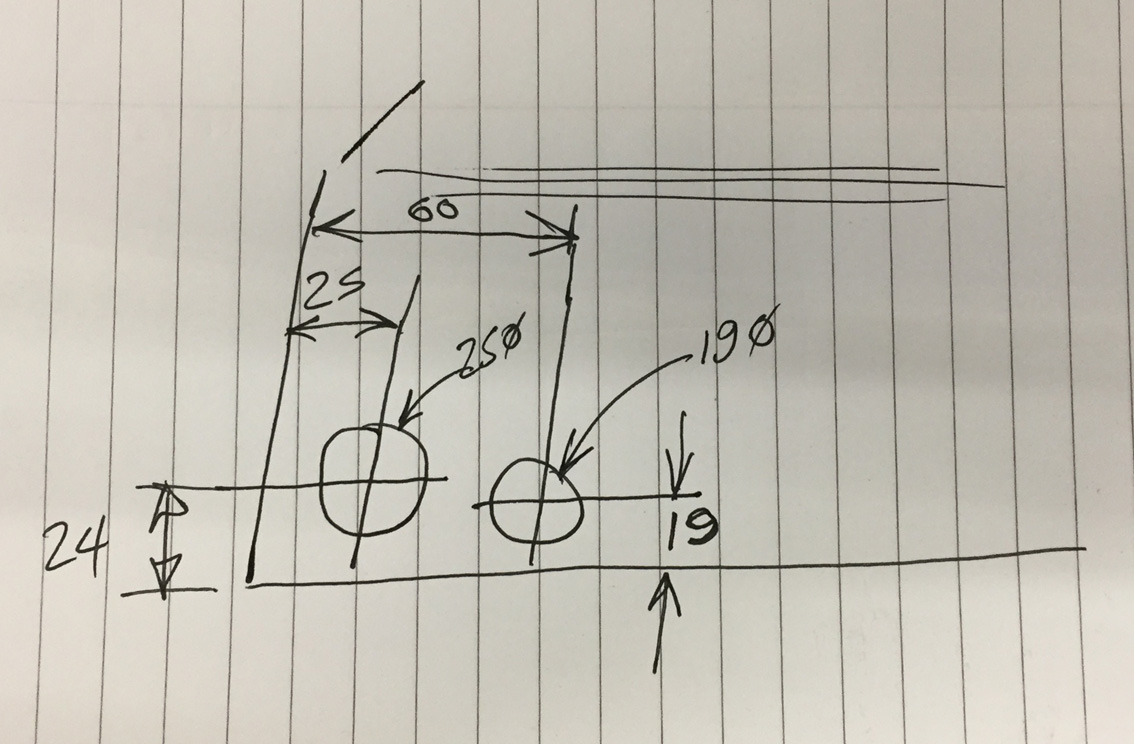
Dims for reference.
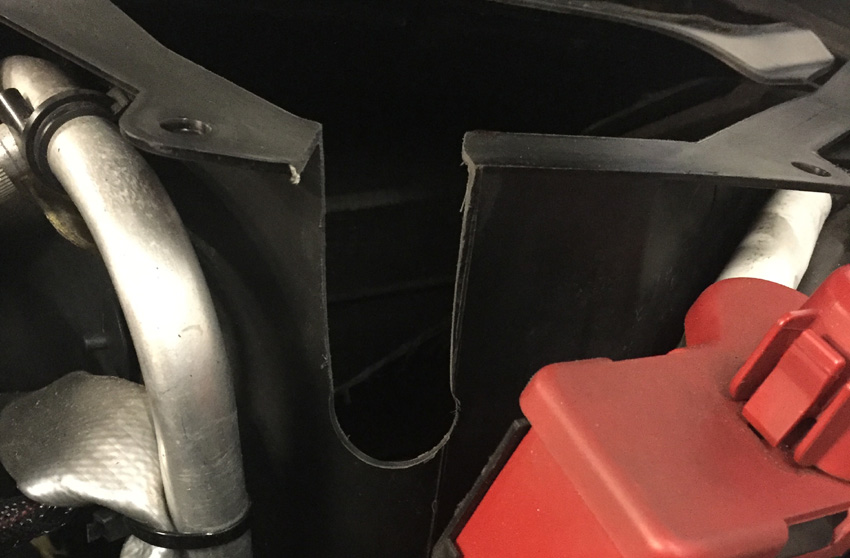
Hacking into the car air box marks a point of no return !
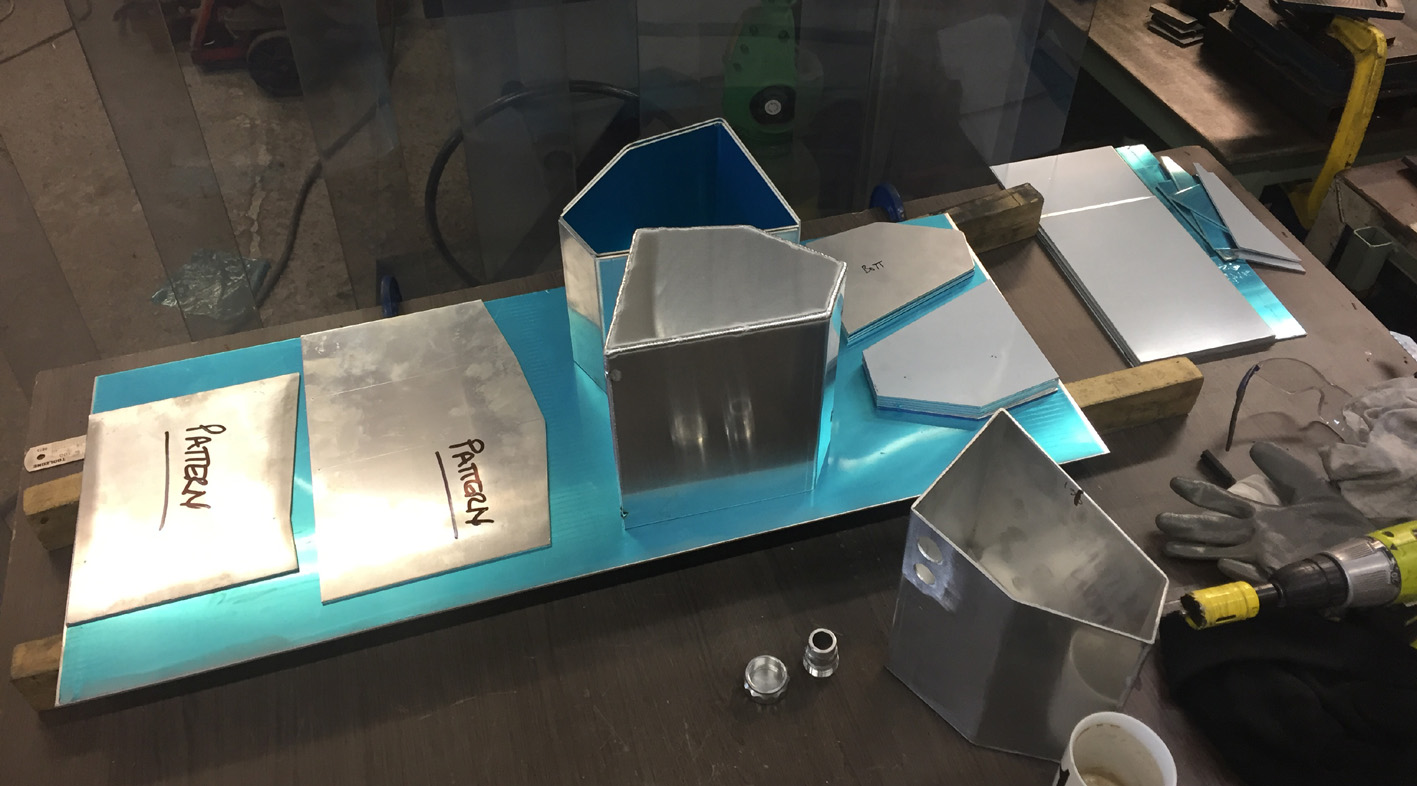
Flat patterns and cad drawings proven out for tank body.
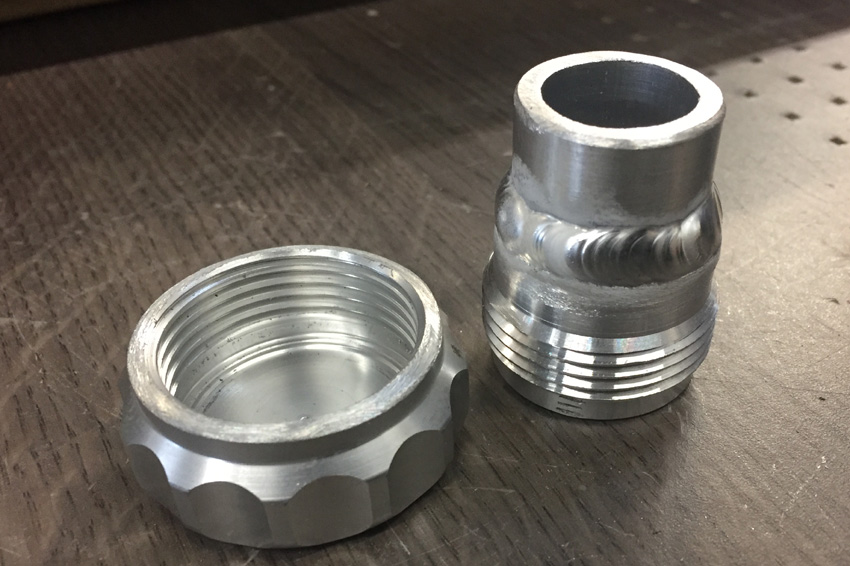
Filler cap neck shoulder removed and extension piece
added.
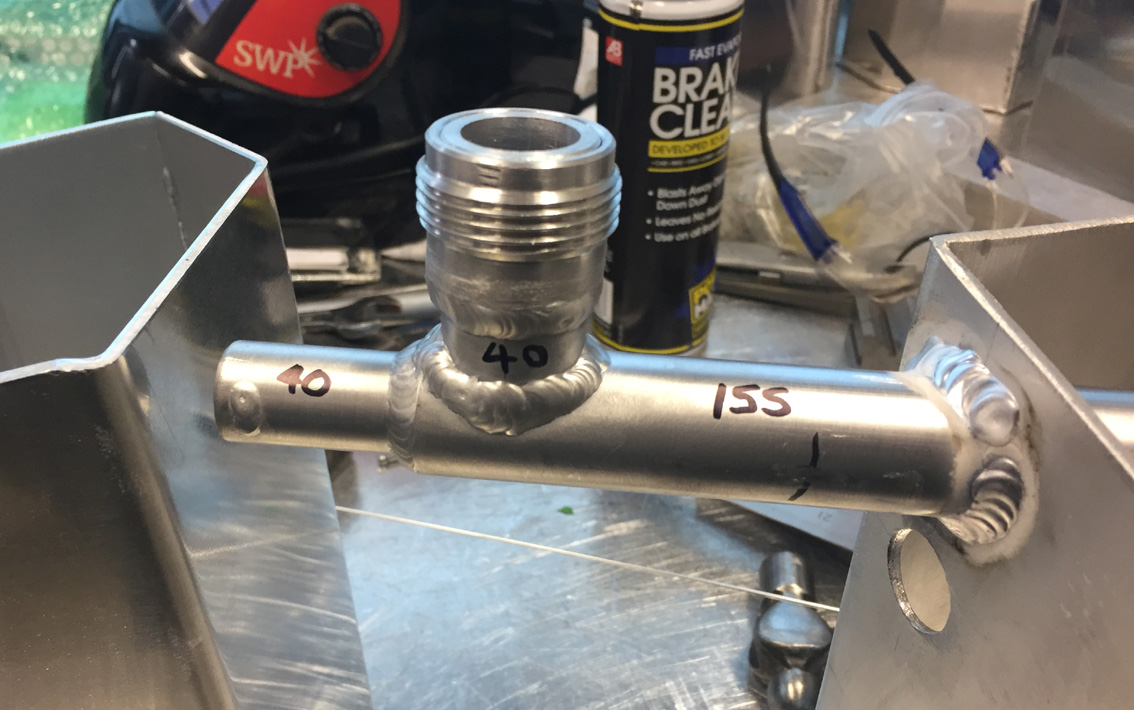
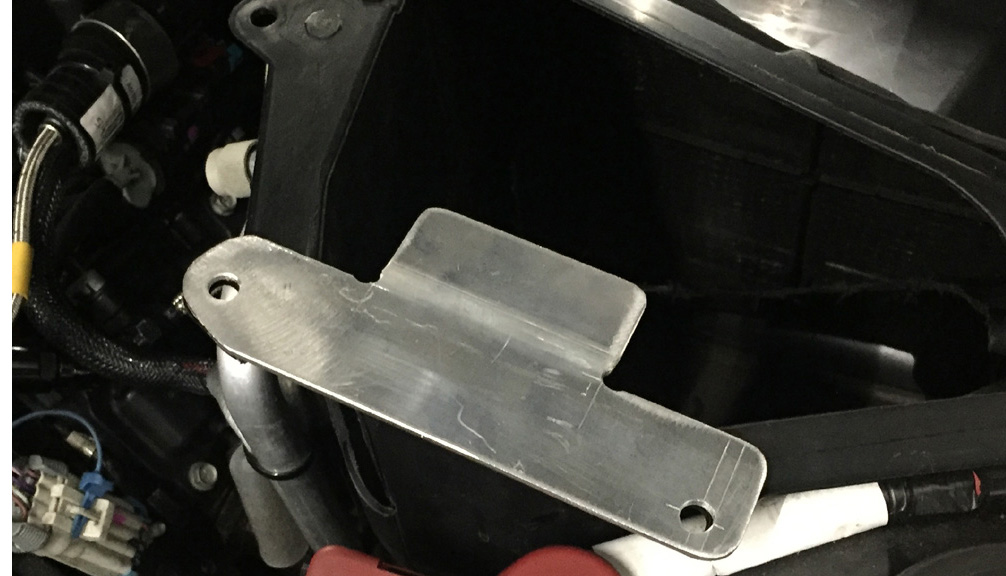
Mount plate to be welded to tank top,
reinstates strength lost from making the cutout for pipes.
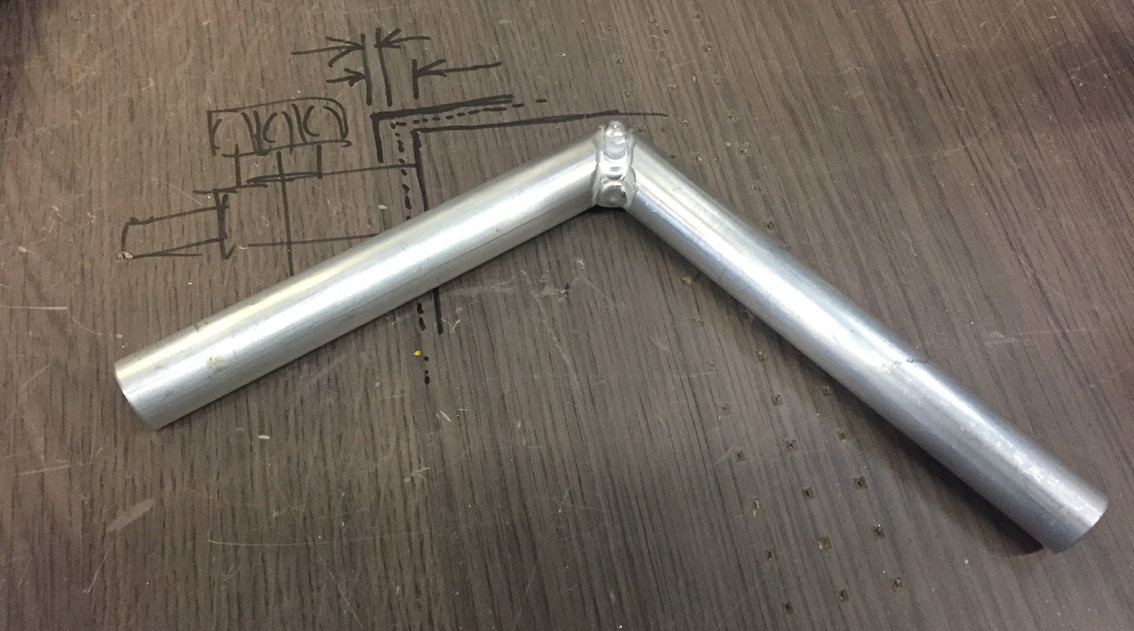
Siphon tube.......don't like it :)
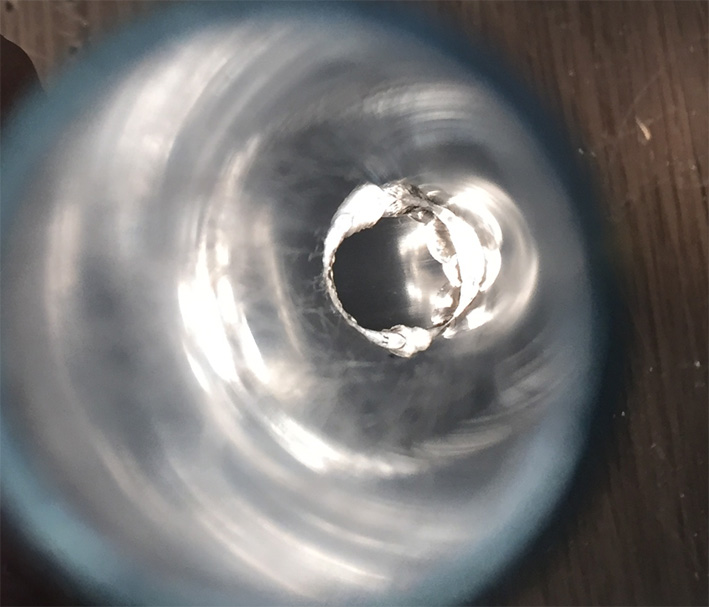
That's not going to flow well......so
need to look to bend the tube.
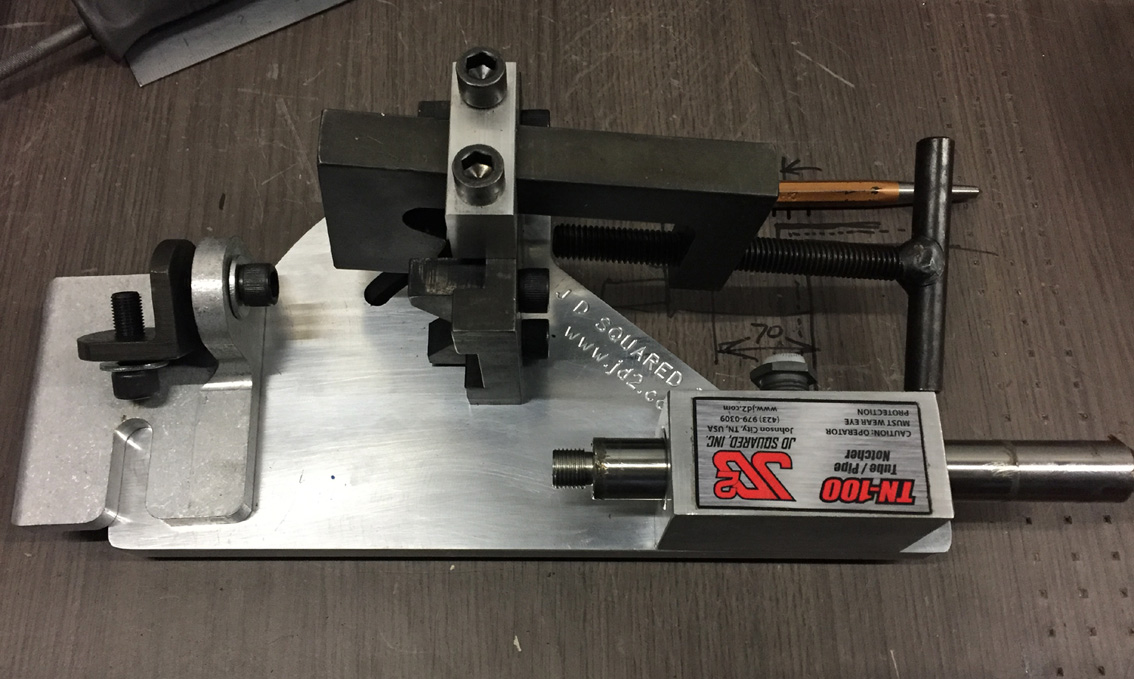
Love
a good reason to buy new tools :)
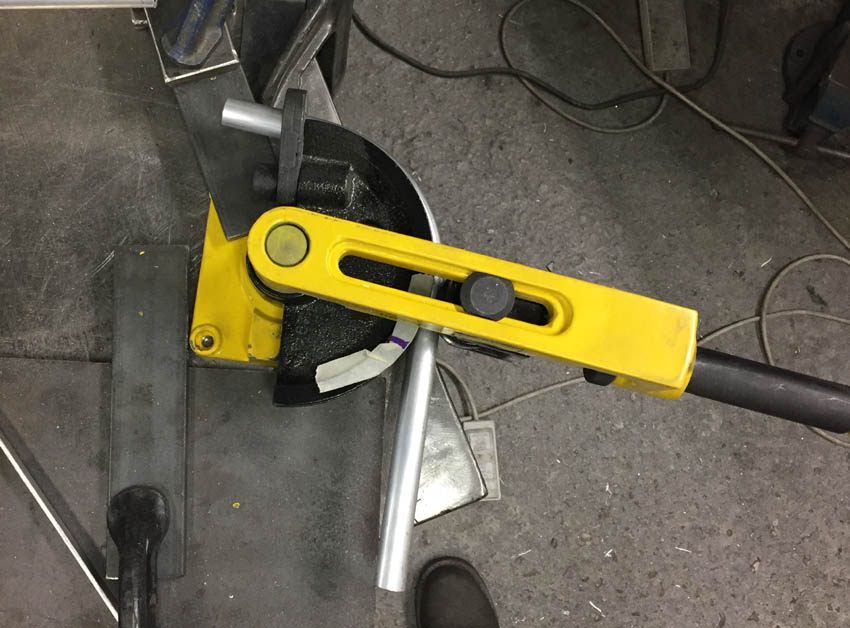
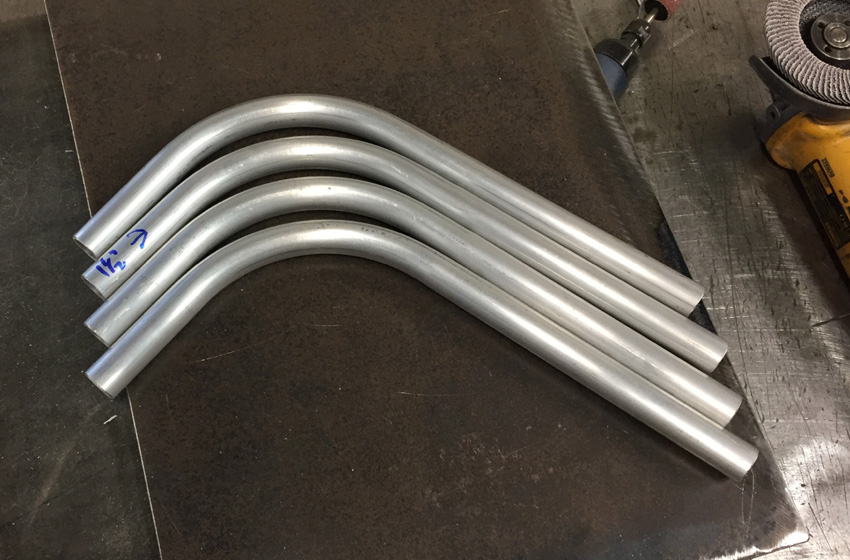
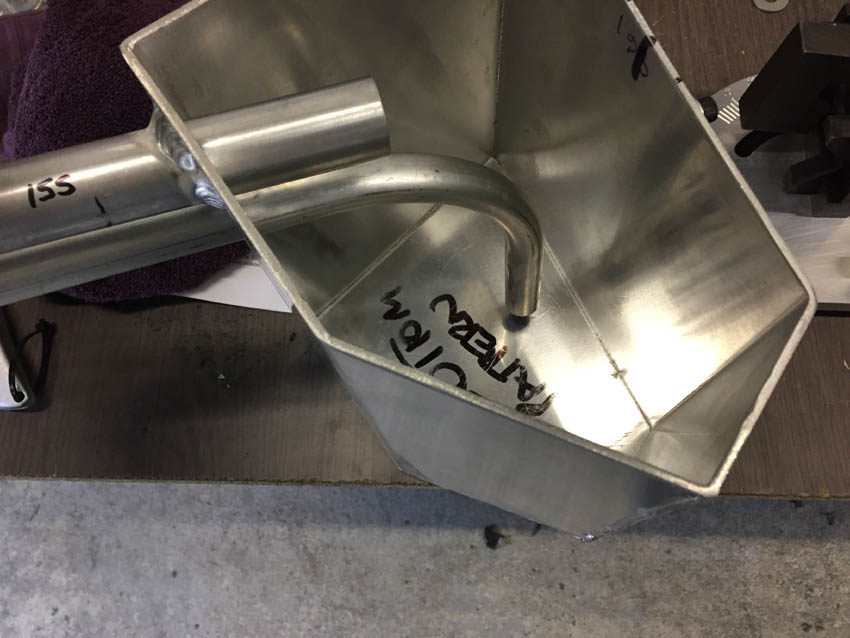
Much better !
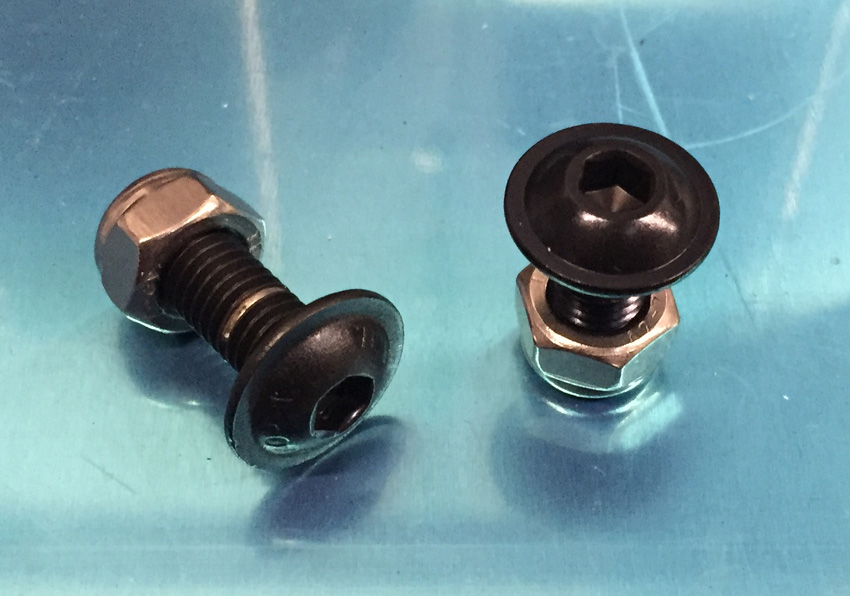
Mmmm...chemical black stainless hardware.
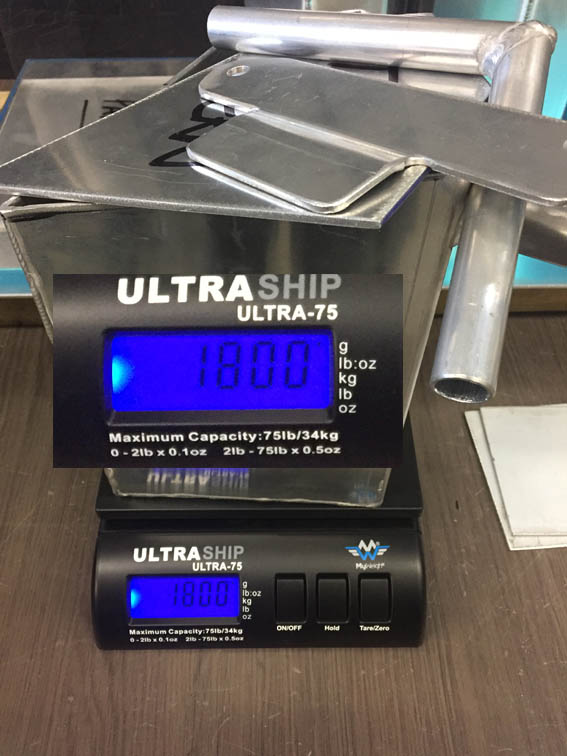
mmmm.......spooky...spot on 1.8kg with all
the junk.
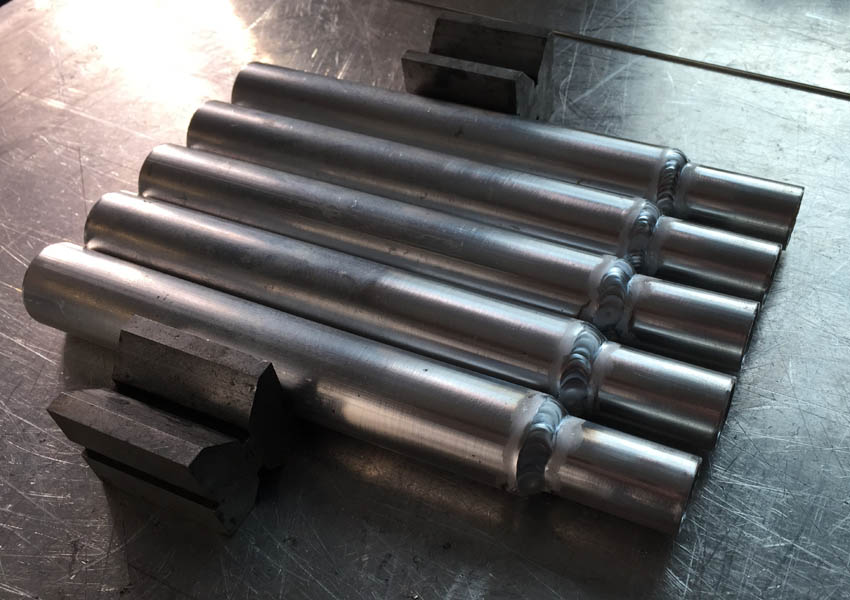
Slow progress today, couldn't release
the saw because it was setup for another job which I had to
get finished first !
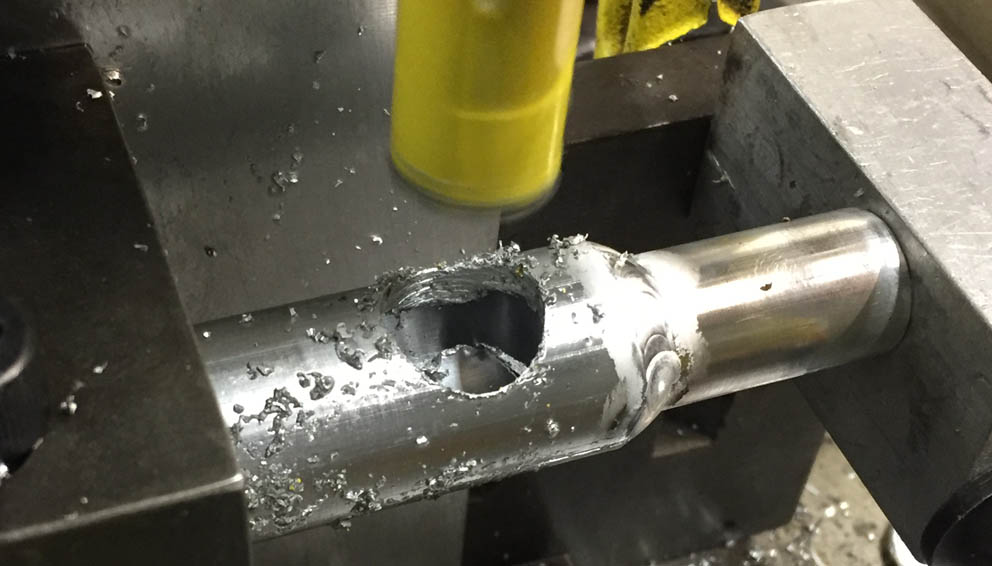
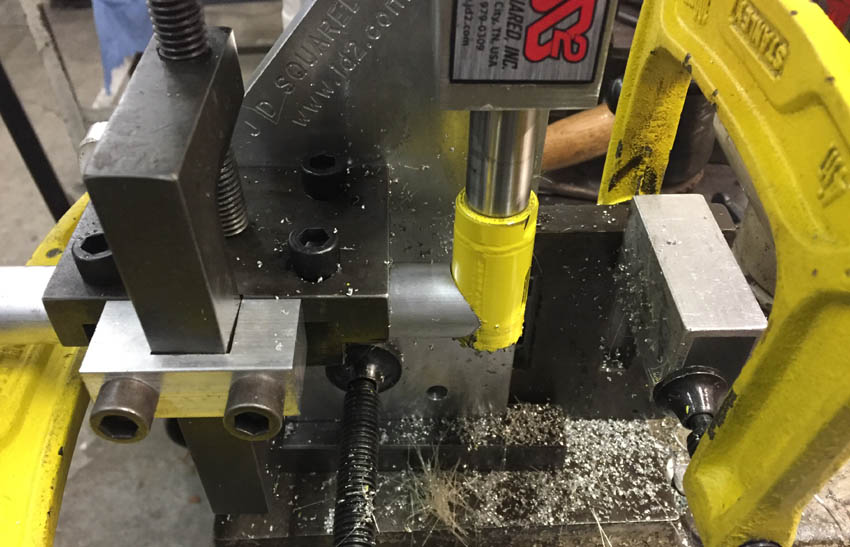
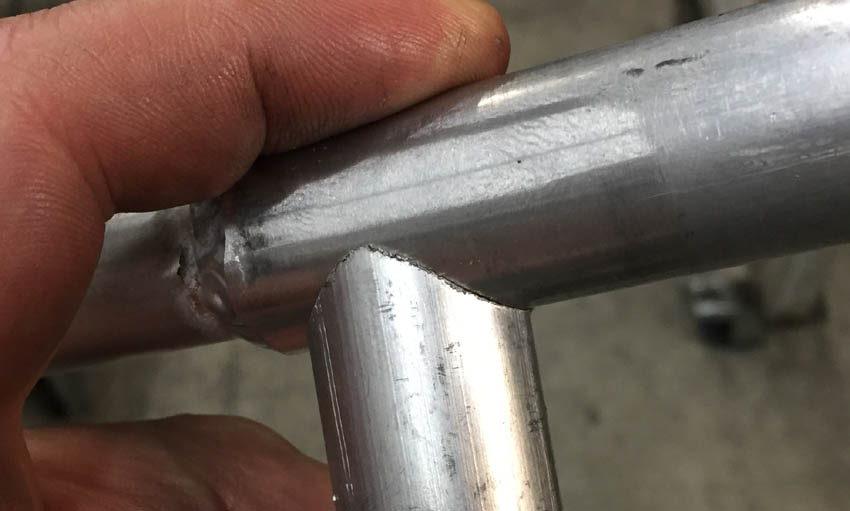
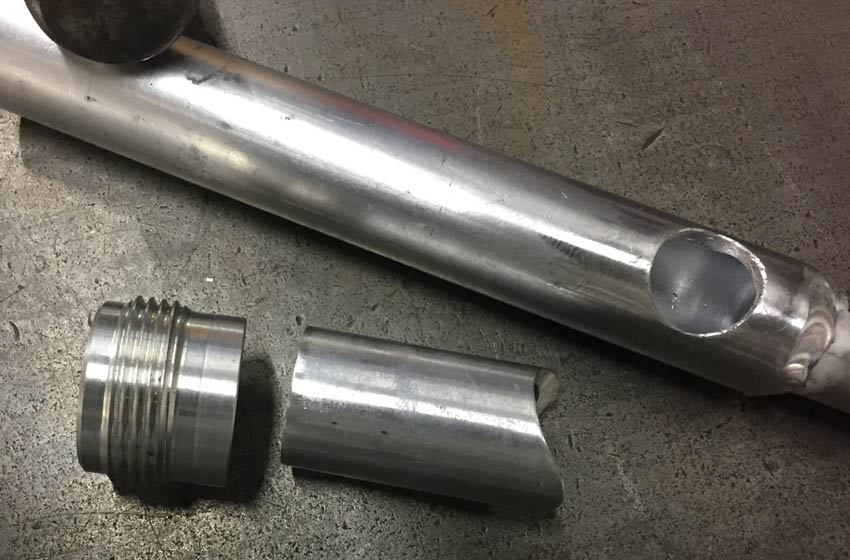
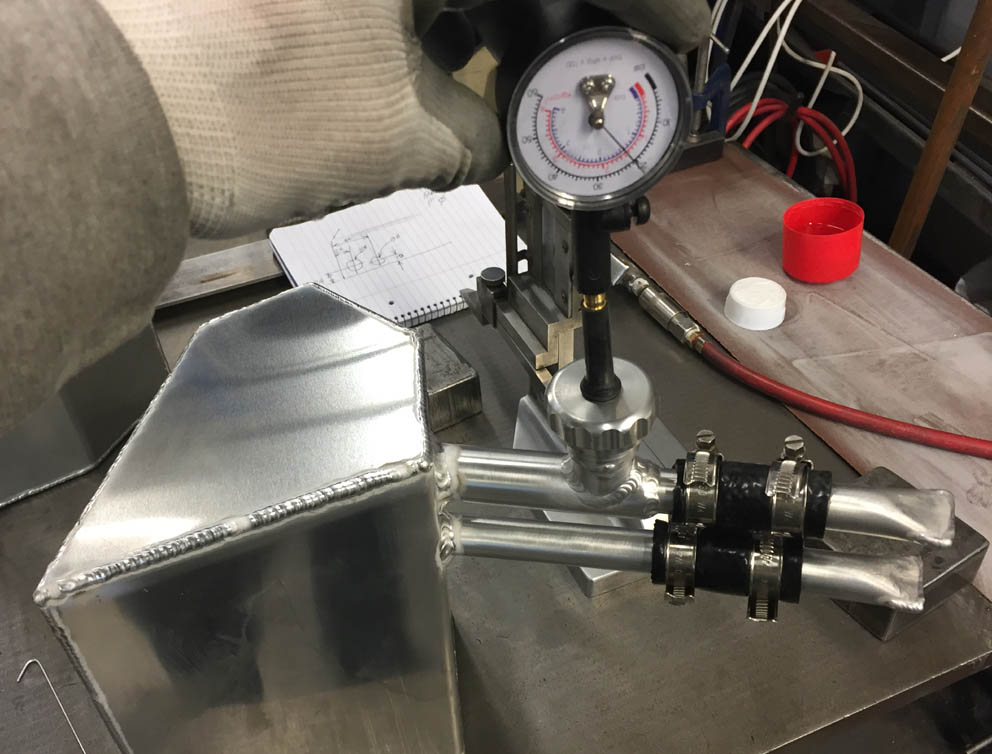
Pressure test to 20psi
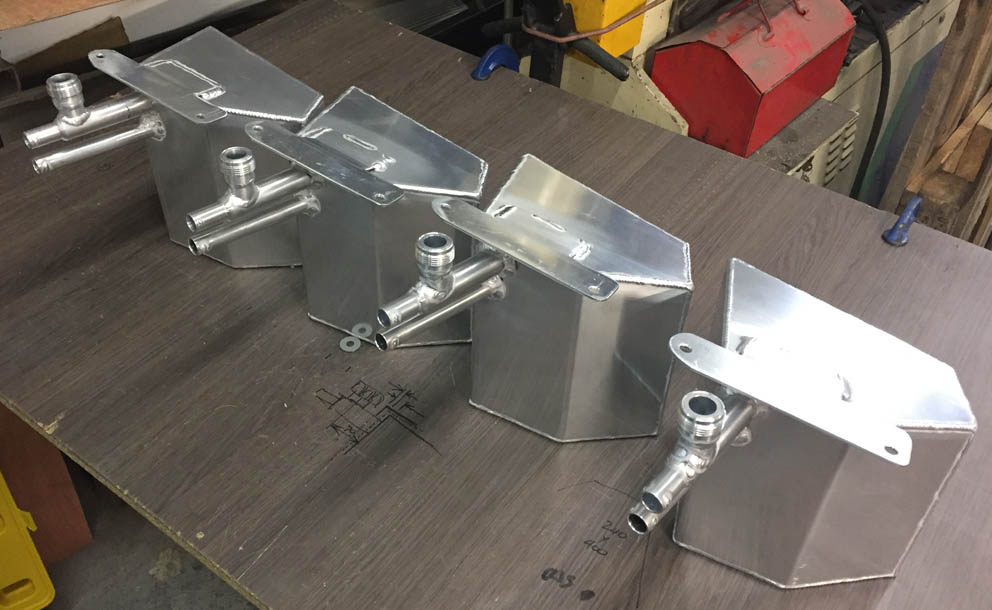
Final tank capacity 5L
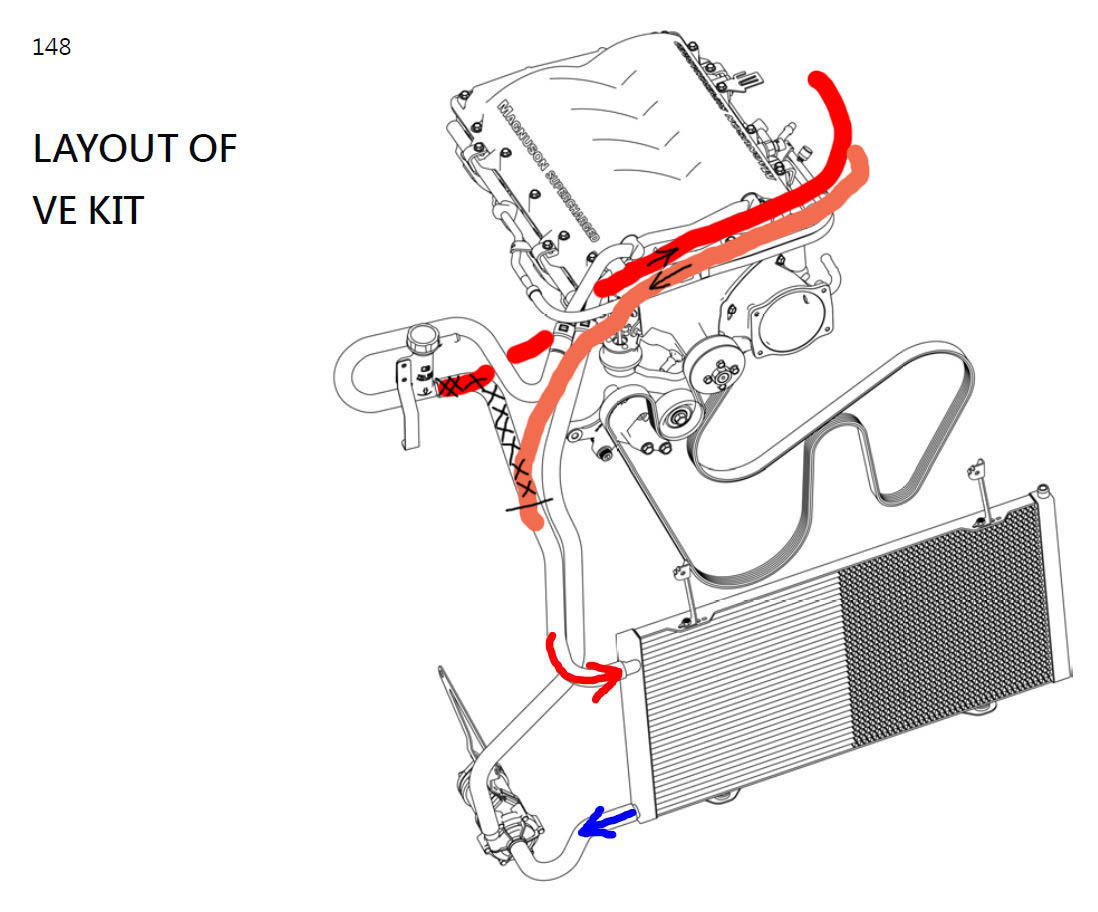
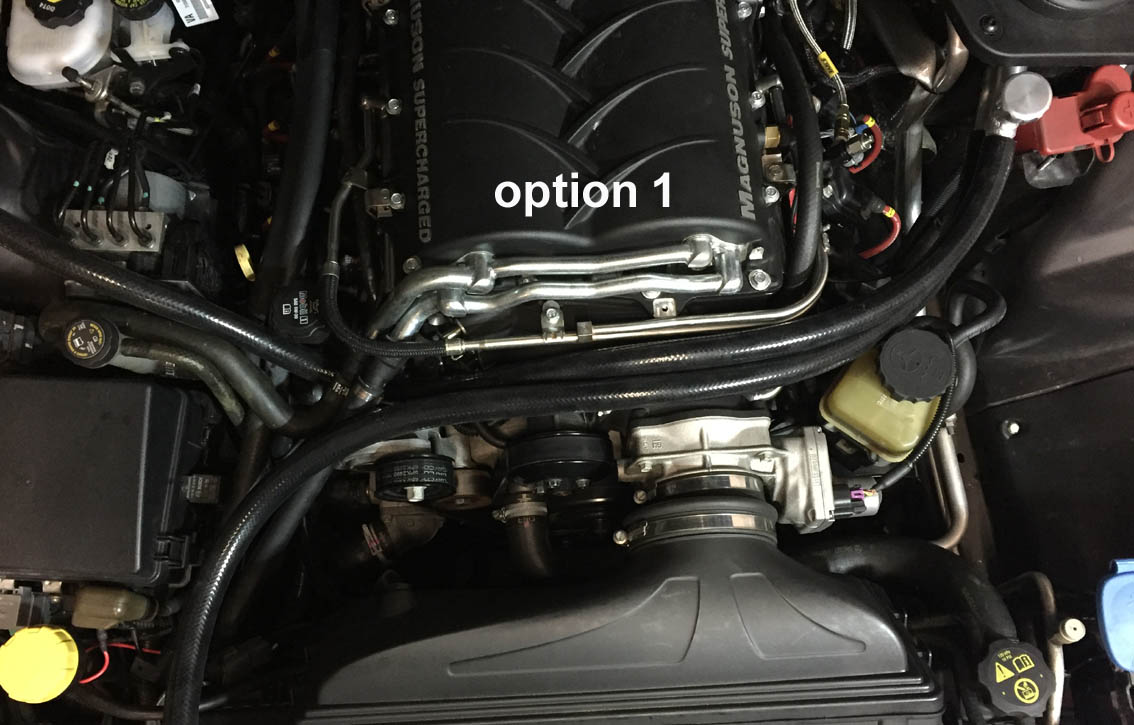
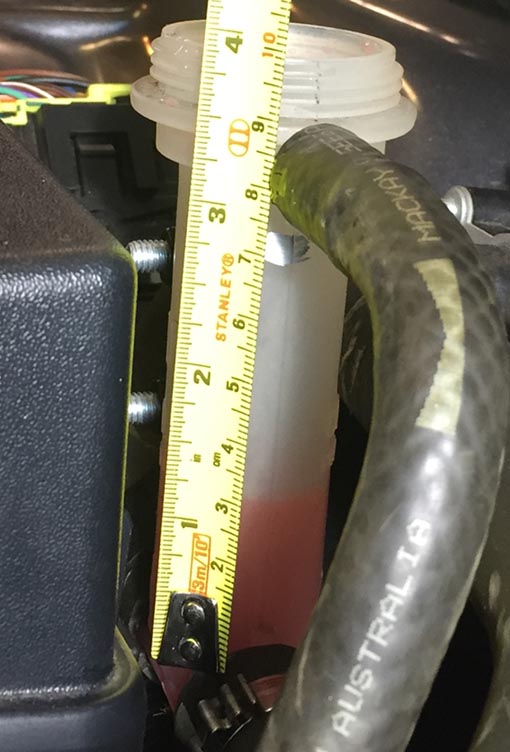
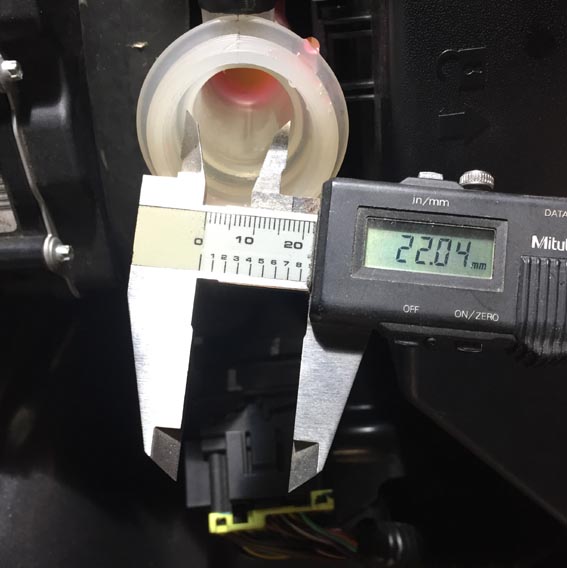
Keep the little
expansion (degass) tank or not ??....I think yes.....
Lets make some
guestimate assumptions.....
1. The total average
change in temperature for the entire volume 35degC
2. Standard volume of
coolant ~2.8L (and 50% glycol mix)
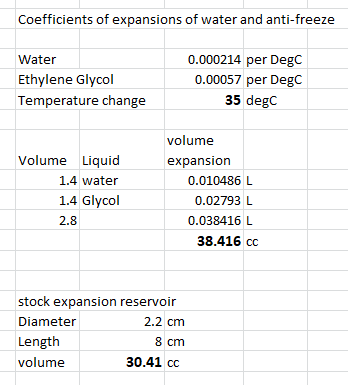
Now if we add in the 5L
of reservoir coolant, we get:-
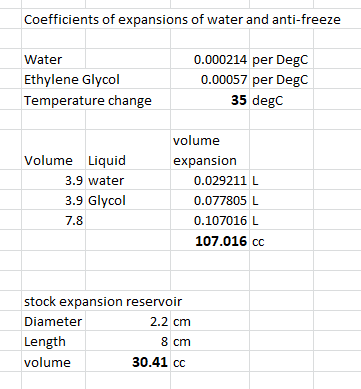
So, I've decided to keep
the little degass bottle, if only for the safety of having the 5psi relief valve
in the cap, so worse
case it will vent air/coolant if pressure rise above 5psi.
First thing I did was
syphon as much coolant from the degass bottle and system
by stuffing a small bore
plastic tube into and down the hose as far as it would go,
drained abou 1/2 litre.
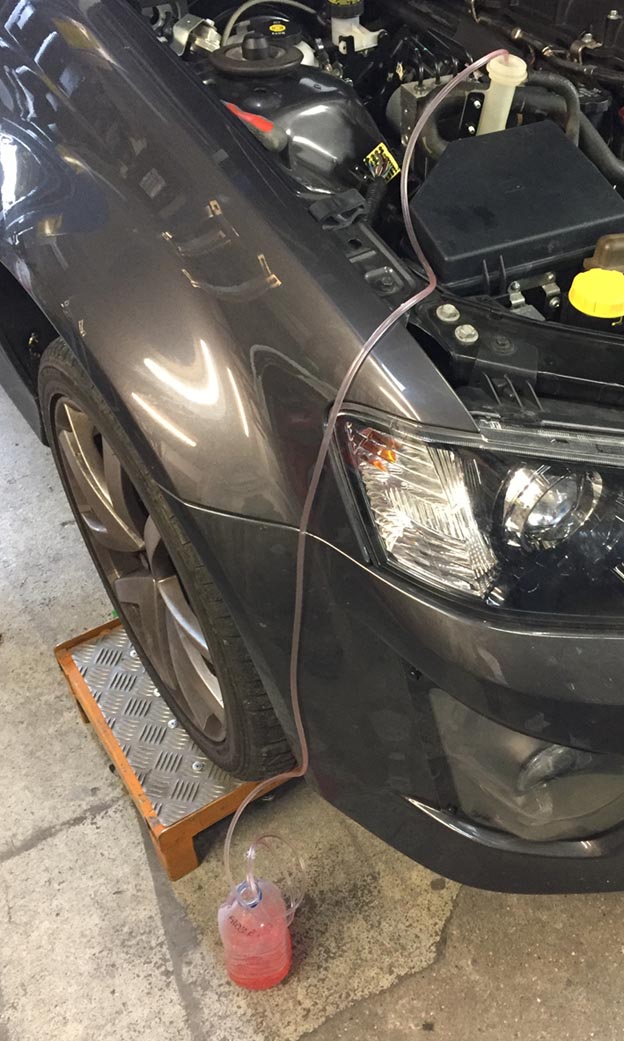
Next removed the outlet
hose from the degass bottle and make a cut as shown, the 90deg
piece is not required.
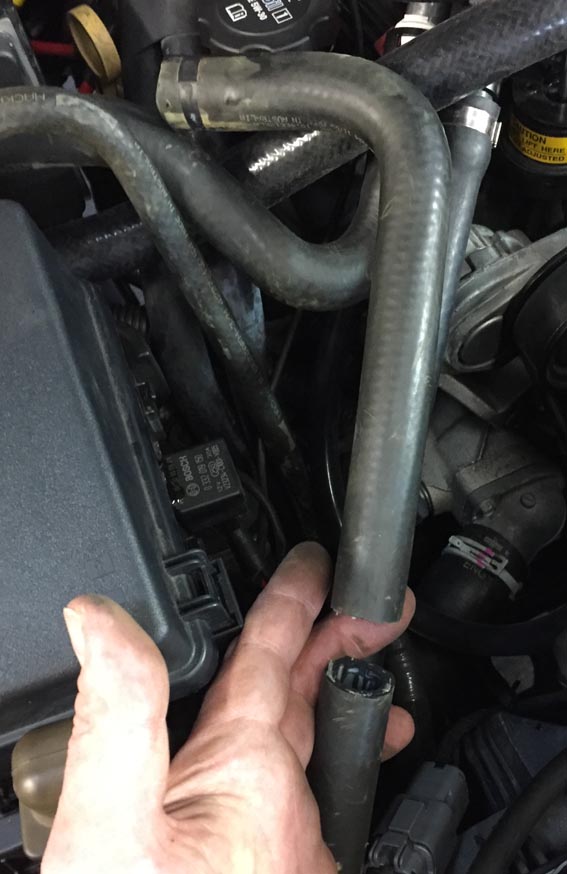
Using some sticky backed foam, stick
some around the cut out aperture inside
to stop hot engine bay air entering
into the cabin air.
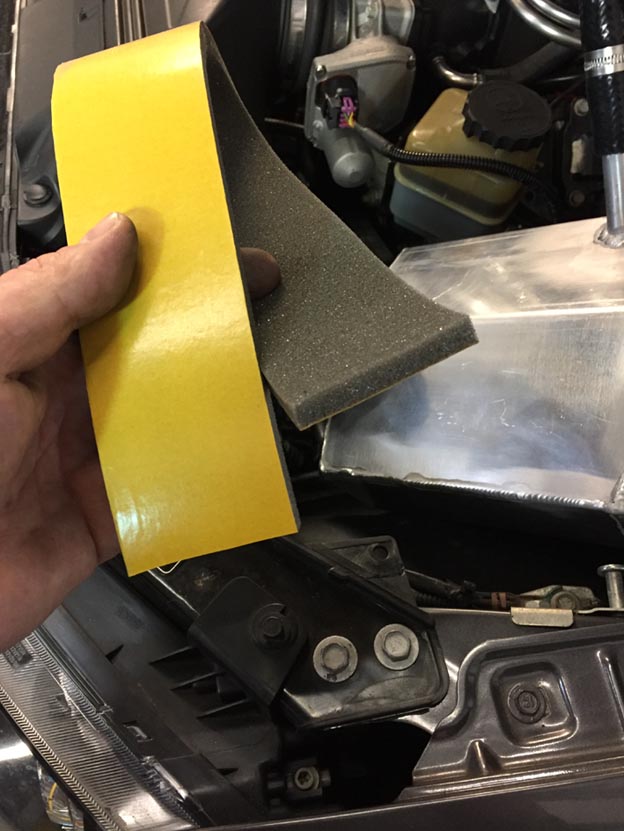
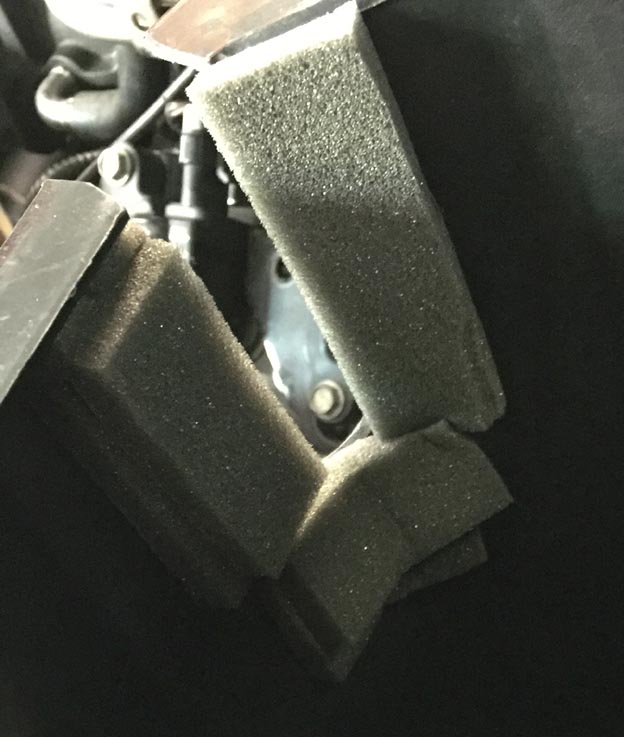
Connect Hoses to tank
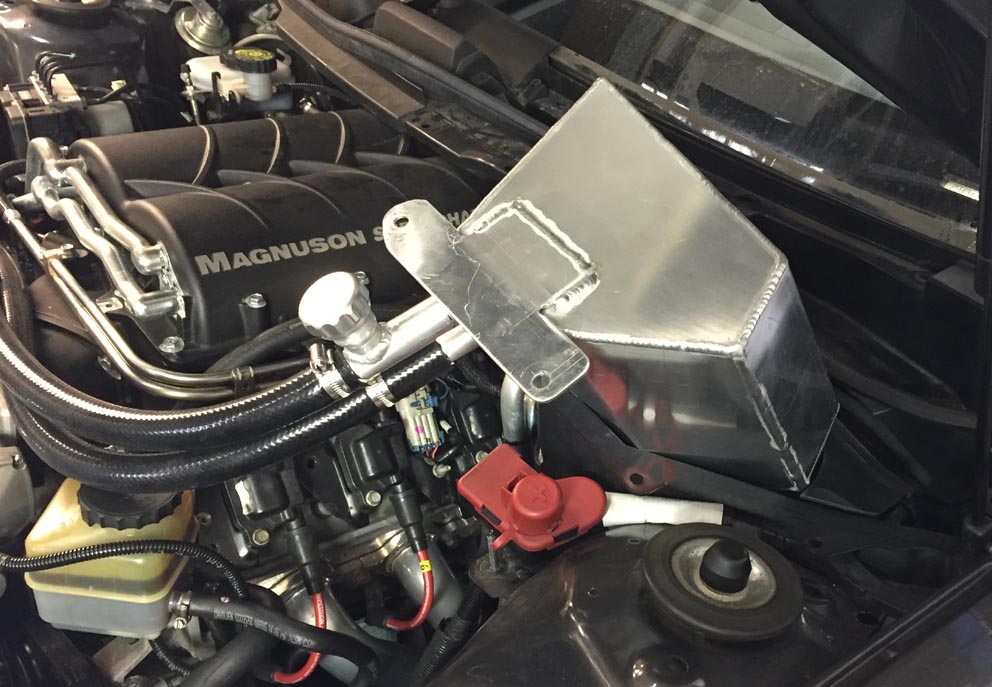
Connect inlet hose to tank direct to
the degass bottle outlet.
Connect the tank outlet hose to the
top radiator inlet hose.
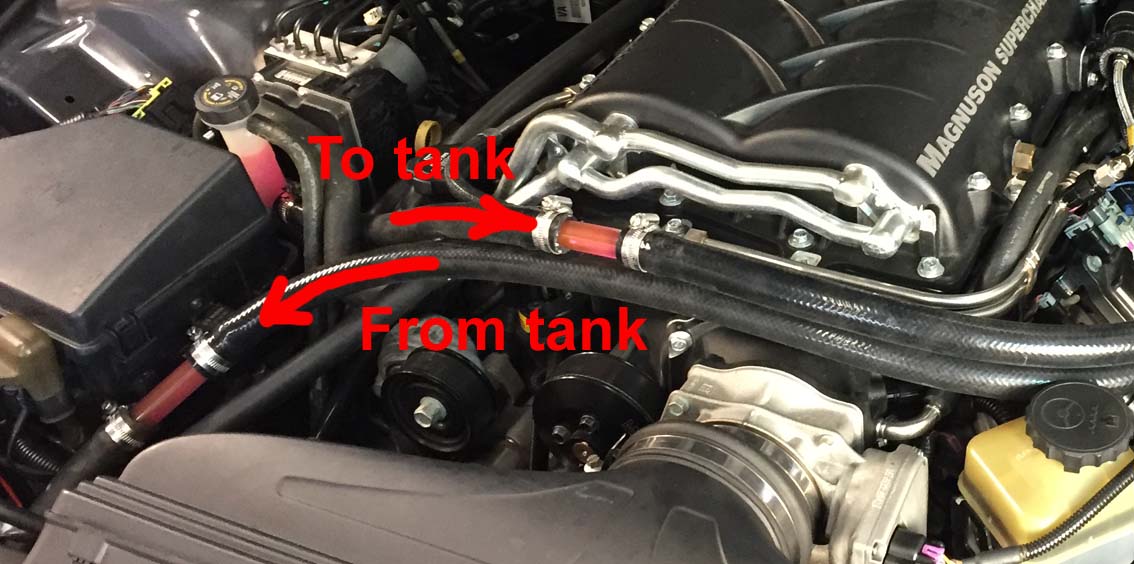
The 2 polycarbonate tubes are just to
check that coolant is flowing properly without air locks.
I found it easier to fill the tank
with 5L of coolant before placing into the heater plenum.
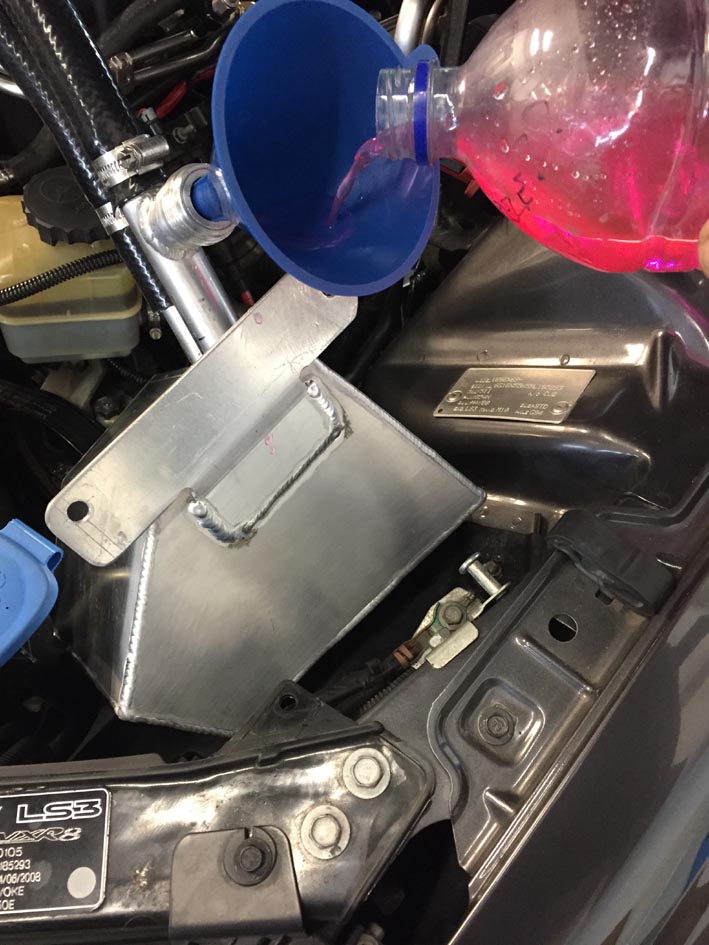
Tank fitted in place
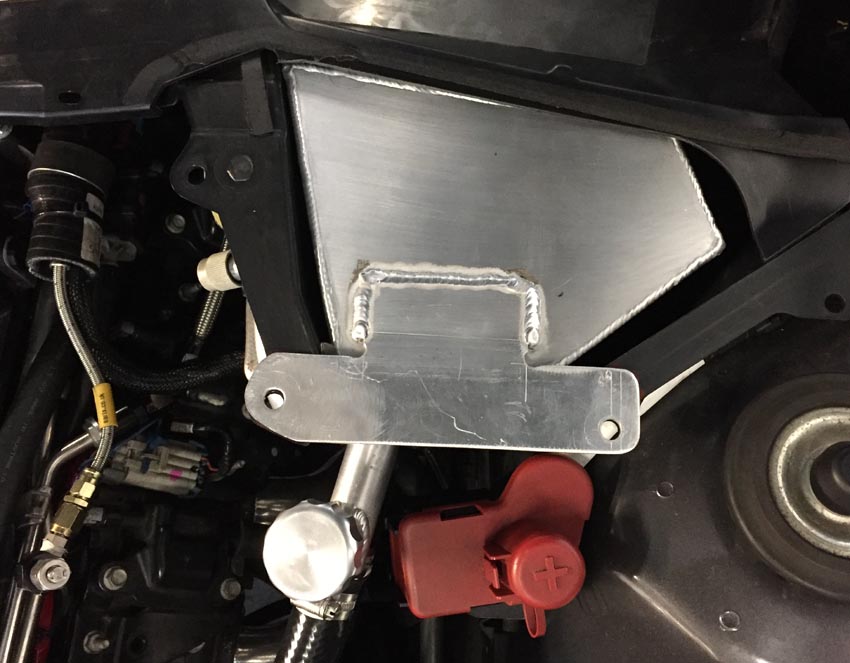
Scuttle re-fitted
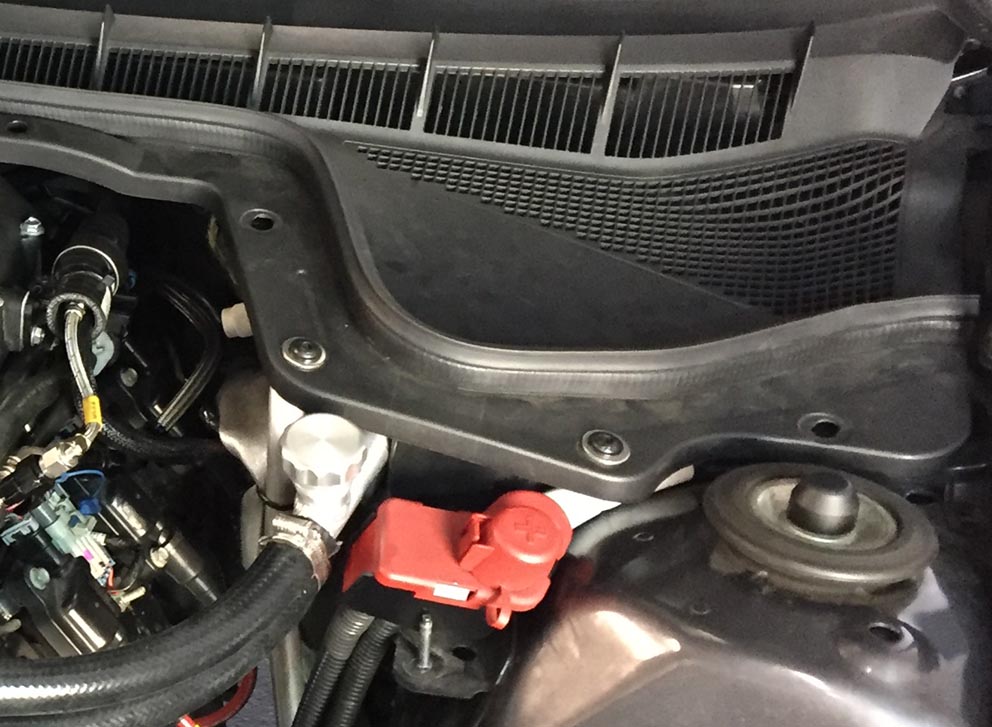
Job done.
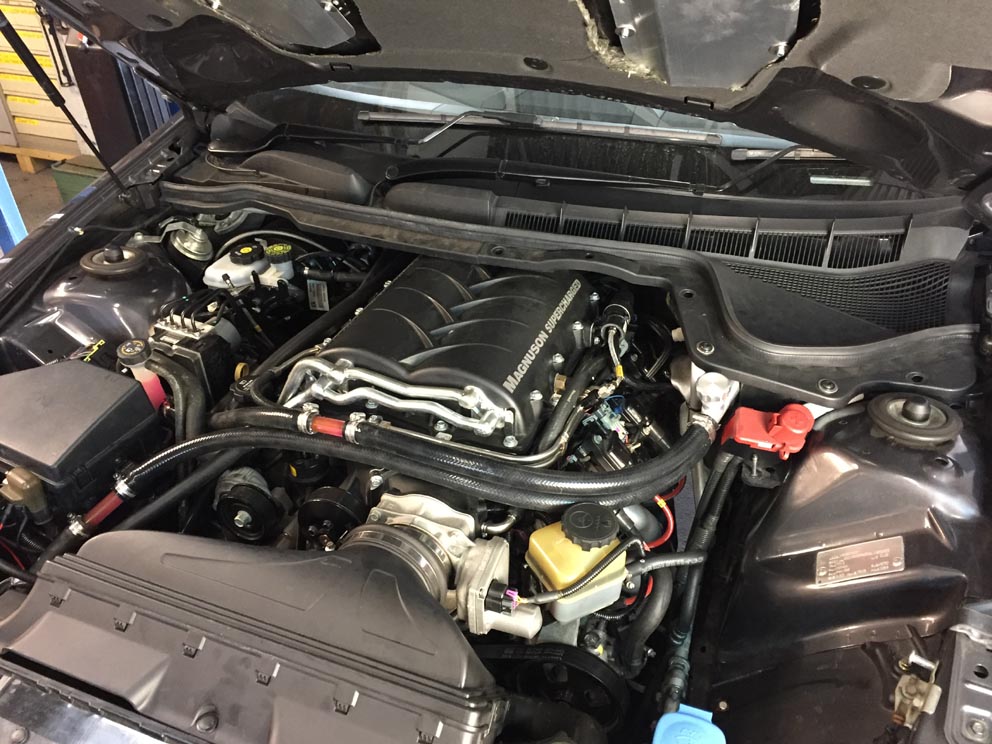
The charge cooler pump runs with
ignition on, so I left the pump to run for a few minutes to clear all the air.
YouTube video here:-
So, time for a dyno run and retune to
accommodate a smaller supercharger pulley :)
This gave an increase of ~2psi
overall.
So, how did it perform ?..........
First, some reference material:-
http://www.departmentofboost.com/tech/intake_air_temp_tech.htm
- Twin Screw blowers are the most
thermally efficient of the blowers.
This is because they’re actual
compressors where everything else is a “blower” to one degree or another.
You’ll see about 12deg/psi of temp
gain with a Twin Screw.
- A correctly sized Twin Screw making
10psi will get you a temp rise of about 120deg. But then you have to
add that to the outside air temp
(ambient), which we’ll say is 80deg. That is a total discharge temp of 200deg.
So, bottom line lets say for every 1psi boost, the charger outlet temperature
will rise 6.7degC
Looking back to
the last dyno runs:-

Ambient temps 18degC
Pull 1

Pull 2

This years dyno and re-tune:-

Pull 1

Pull 2

Remembering that for every 1psi rise
in boost, supercharger outlet (prior charge cooler rads) temps will rise 6.7degC
2017
Theoretical supercharger outlet max
temp = ambient 18degC + (9 x 6.7degC) = 78.3degC
Pull 1 Ambient temp 18degC boost of
9psi should have seen temp rise of 60.3degC, actual rise 6degC (38-44)
Pull 2 Ambient temp 18degC boost of
9psi should have seen temp rise of 60.3degC, actual rise 8degC (37-45)
2018
Theoretical supercharger outlet max
temp = ambient 13degC + (11 x 6.7degC) = 86.7degC
Pull 1 Ambient temp 13degC boost of
11psi should have seen temp rise of 73.7degC, actual rise 11degC (32-43)
Pull 2 Ambient temp 13degC boost of
11psi should have seen temp rise of 73.7degC, actual rise 11degC (34-45)
Conclusion
Considering that the extra 2psi would
have raised supercharger outlet temps by around 13.4degC, even if you decrease
this
by the difference in ambient temps ie
5degC, then outlet temps should have been 8.4 deg more, and therefore (possibly)
post
intercooler temps should be ~44degC +
8.4degC = 52.4degC......but what was actually observed was pretty much same IAT
as before,
so maybe the tank has
helped....certainly it has not hindered temperatures and recovery and
stabalisation after a pull is still very good.
I guess the acid test will be how the
AIT behave during a flat out mile event :)


















